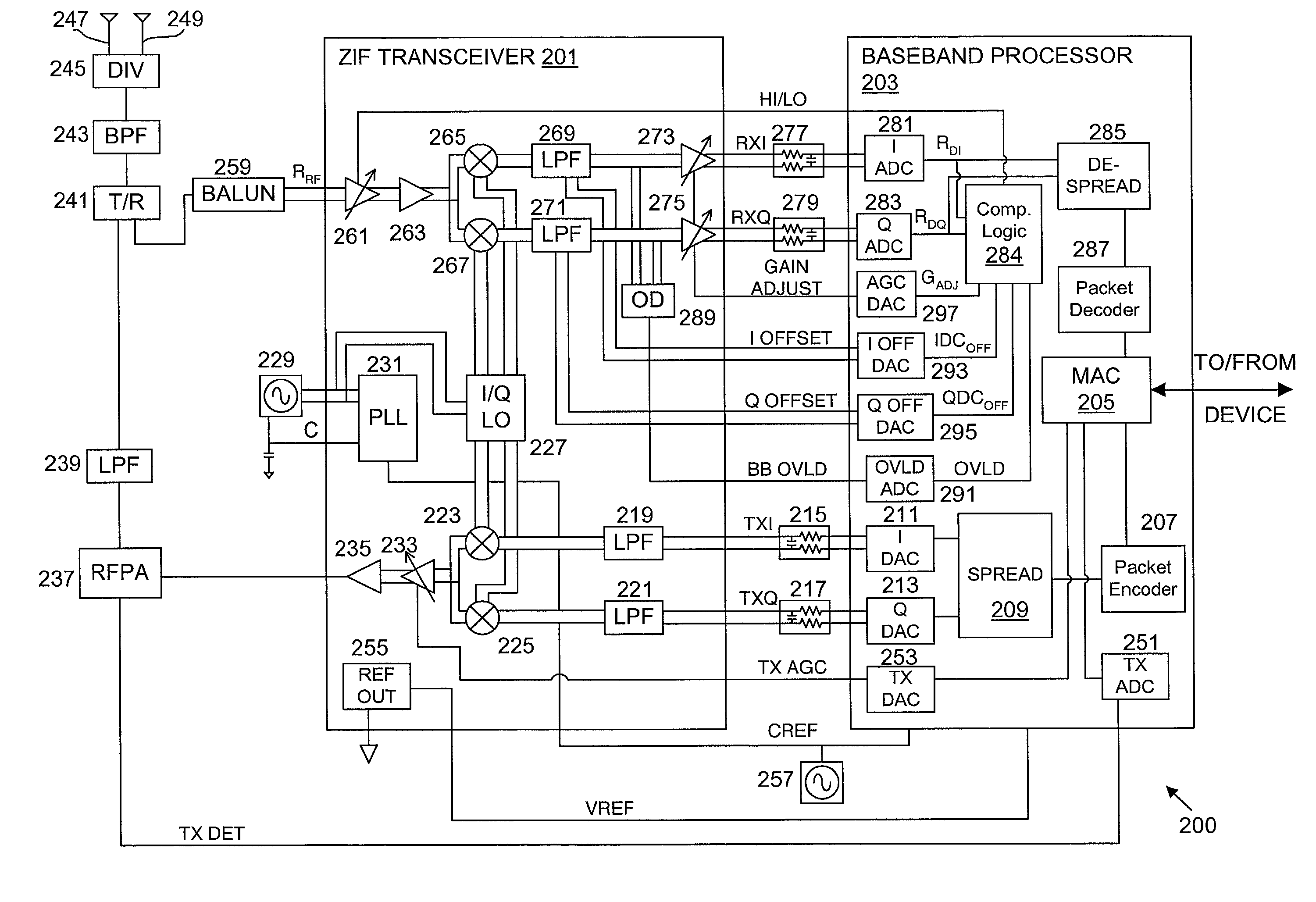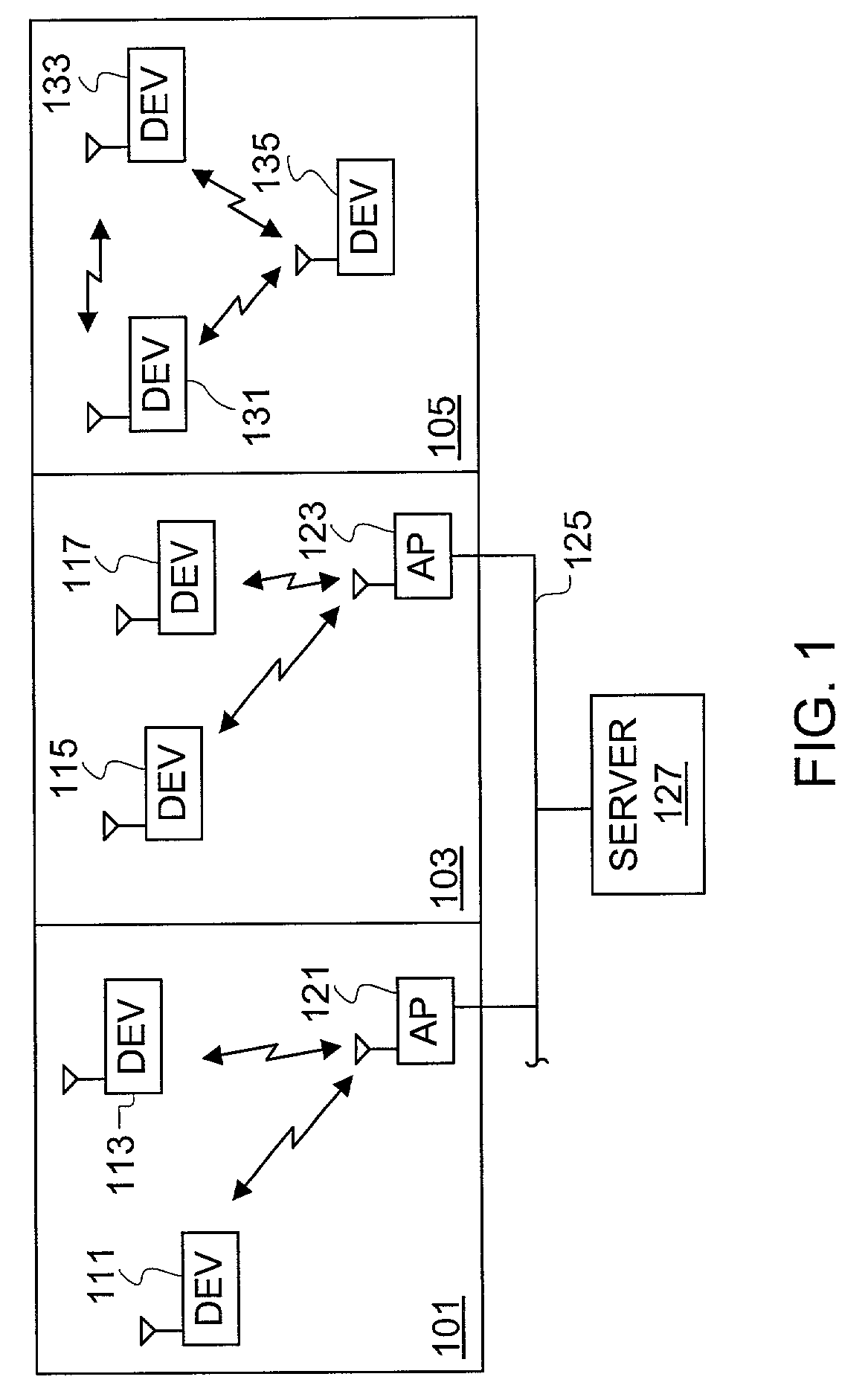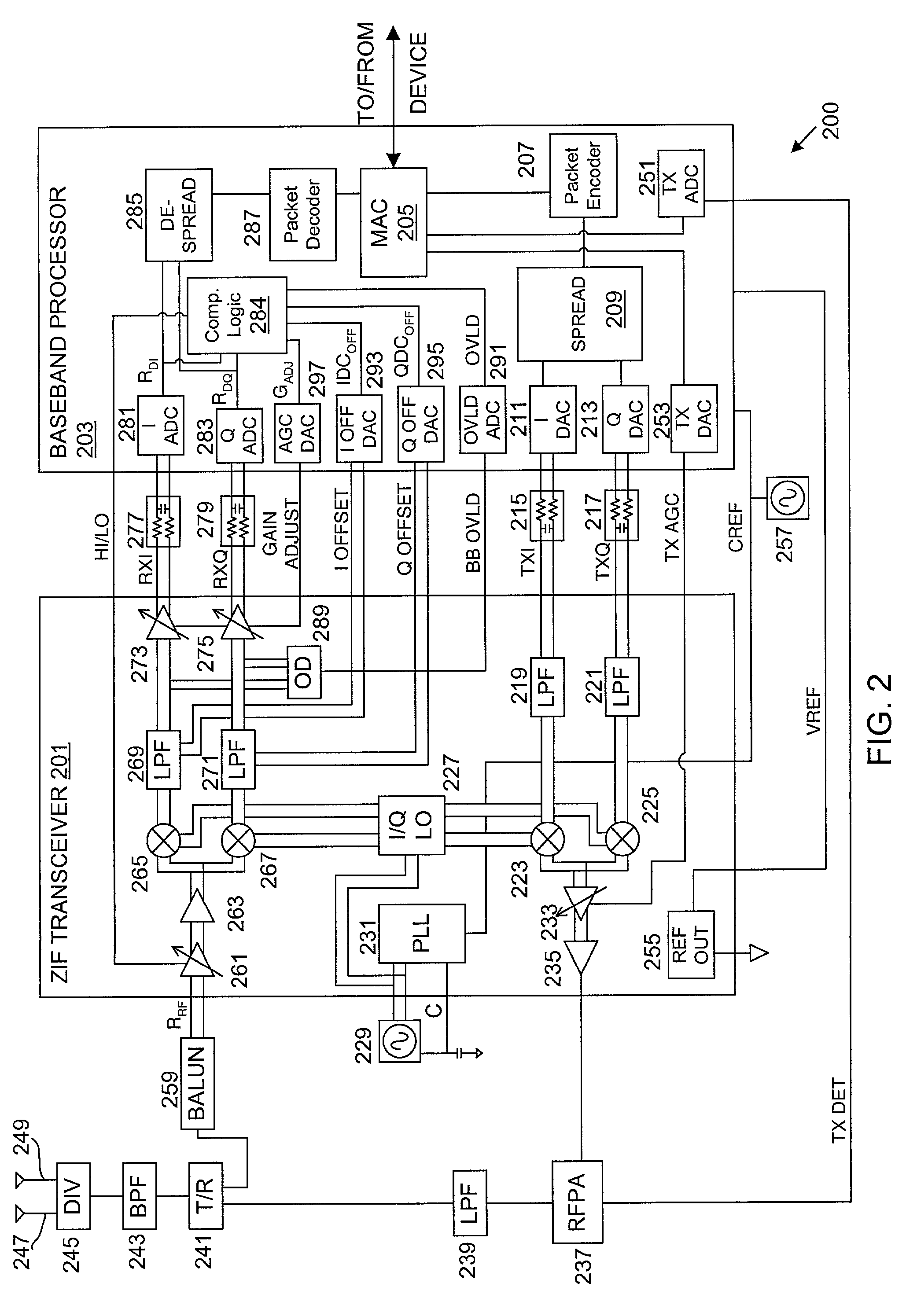Packet acquisition and channel tracking for a wireless communication device configured in a zero intermediate frequency architecture
a wireless communication device and zero intermediate frequency technology, applied in the field of wireless communication, can solve the problems of limited location of each device, many limitations, and difficult implementation, and achieve the effect of convenient implementation
- Summary
- Abstract
- Description
- Claims
- Application Information
AI Technical Summary
Benefits of technology
Problems solved by technology
Method used
Image
Examples
Embodiment Construction
[0034]FIG. 1 is a block diagram of one or more WLANs generally illustrating operation of wireless devices implemented according to one or more embodiments of the present invention. Although the present invention is illustrated for use with WLANs in exemplary embodiments, it is understood that the present invention applies for any radio or wireless communications and is not limited to WLAN applications. A first area 101 and a second area 103 represent separate compartments or divisions of a location such as offices within an office building or rooms within a house. The areas 101 and 103 may each include wireless access points (APs) 121 and 123 for controlling communications within the respective areas 101 and 103. As shown, the APs 121, 123 are coupled to a wired network such as a LAN 125, which is further coupled to a common server computer 127.
[0035]Within the area 101, wireless devices 111 and 113 are able to communicate with each other via the AP 121, and within the area 103, wir...
PUM
 Login to View More
Login to View More Abstract
Description
Claims
Application Information
 Login to View More
Login to View More - R&D
- Intellectual Property
- Life Sciences
- Materials
- Tech Scout
- Unparalleled Data Quality
- Higher Quality Content
- 60% Fewer Hallucinations
Browse by: Latest US Patents, China's latest patents, Technical Efficacy Thesaurus, Application Domain, Technology Topic, Popular Technical Reports.
© 2025 PatSnap. All rights reserved.Legal|Privacy policy|Modern Slavery Act Transparency Statement|Sitemap|About US| Contact US: help@patsnap.com



